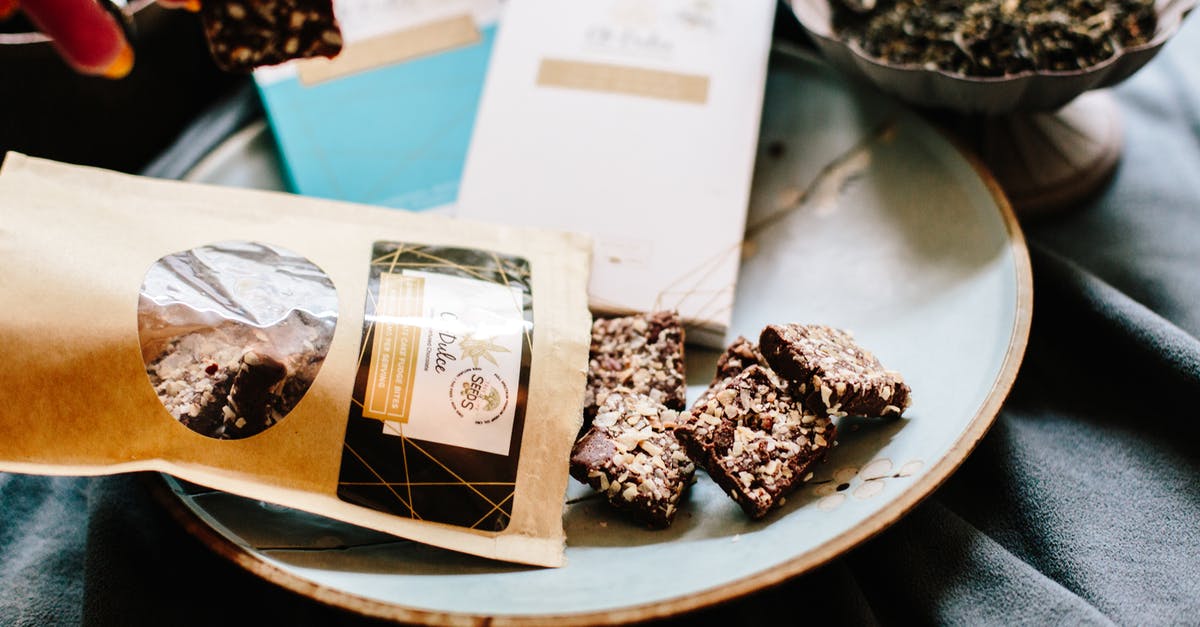Why Do We 'Simmer' Fudge Instead of 'Boiling' it?

I've noticed that many candy recipes (specifically fudge recipes) instruct you to boil the mixture, then reduce to simmer, until you reach a specific temperature. My limited understanding of physics is that as the mixture simmers, water evaporates, and the more concentrated mixture has a higher boiling point.
So it makes sense that we stop at a certain temperature and that will be the desired consistency. But it takes a long time!
Is there any reason why I can't continue to boil for longer? Is it just to make it easier to stop at the correct point, or is there a lot more going on that wouldn't happen correctly at a higher temperature?
(P.S. - I found this similar question: Why should a stock be simmered and not boiled? but I'm not sure the answer is applicable with fudge, but please correct me if I am wrong)
Best Answer
Candymaking is extremely sensitive to temperature. If the mixture heats higher than the point that produces the desired texture, you're basically out of luck. That makes it very critical that you reach and not exceed your target temperature.
This is particularly difficult when making candy because much of it starts as a sugar-and-water syrup. Water has an especially high heat capacity, meaning that it takes a relatively high amount of applied heat to raise its temperature. This is why a big pot of water takes a long time to boil. It also implies (because diffusivity is calculated from heat capacity and density) that it takes a while for applied heat to diffuse through the entire pot; that is, the bottom of the pot where heat is being applied will be significantly warmer than the top, absent more active circulation like stirring or the pumping action of an immersion circulator.
Anyway, "boiling" implies greater heat application than "simmering". The more heat you're applying to the bottom of your pot, the greater the difference between the top and bottom. If you're then measuring the temperature at or near the top, you may be getting a wildly inaccurate measurement of the "total" heat of your syrup. Once the heat diffuses completely, the mixture will be several degrees warmer than you measured, and that can completely ruin an entire batch of otherwise-delicious fudge.
Simmering is recommended because it gives the heat being applied to your syrup more time to diffuse, which means more even and consistent heating, which means you can reliably hit your target temperature without going over. If you became some kind of ninth-dan fudge guru, maybe you could boil and know exactly how much heat is enough to hit your target, but don't count on getting there.
The sensitivity of this process is part of the reason that candymaking is considered one of those semi-advanced cooking topics. If it was easy, we'd probably all overdose on fudge by the time we learned to safely operate a stove.
Pictures about "Why Do We 'Simmer' Fudge Instead of 'Boiling' it?"



Why do you simmer instead of boil?
Simmering is a gentler, low-heat form of boiling liquids characterized by wisps of steam. Simmering is a slightly gentler version of boiling liquids that allows ingredients to reduce and thicken. This makes simmering a popular method for slow cooking, braising, and making reductions.How do you not burn fudge?
Choose a saucepan with a heavy bottom or one that's lined with a nonstick material to keep the fudge from burning. Cook fudge over medium-high heat until mixture boils, then clip a thermometer to the side of the pan and reduce heat to medium-low.How long do you boil fudge for soft ball stage?
Combine sugar and milk in a small pot and cook over medium high heat. Stir continuously while the mixture boils for about 10 minutes. After 10 minutes of boiling, check to see if the 'soft ball stage' has occurred.How do you know when fudge is ready?
Use a candy thermometer or conduct a cold water test to check if the fudge is done. Do not rely on the cooking time indicated in your recipe. The fudge is ready when a candy thermometer reads between 112 to 114 \xb0C (234 to 237 \xb0F) or the mixture forms a soft ball in cold water.Why Do We Fall - Motivational Video
Sources: Stack Exchange - This article follows the attribution requirements of Stack Exchange and is licensed under CC BY-SA 3.0.
Images: Tima Miroshnichenko, Tree of Life Seeds, Ruslan Khmelevsky, Kaboompics .com
